cna block 7 integumentary system
1/18
There's no tags or description
Looks like no tags are added yet.
Name | Mastery | Learn | Test | Matching | Spaced |
|---|
No study sessions yet.
19 Terms
integumentary system
the body system that includes the skin and its glands, the hair, the nails and acts to protect the body from various kinds of damage, such as loss of water or abrasion from outside
dermis
the middle layer of the skin which consists of connective tissue, blood vessels, oil and sweat glands, nerves, hair follicles, and other structures
epidermis
the outer layer of cells covering an organism, top layer of skin
subcutaneous tissue
the bottom layer of skin made of connective tissue and fat
decubitus
relating to an ulcer/sore, a difficult-to heal sore that forms when part of the body presses against a surface for a long period of time, cutting off the oxygen supply to the tissue
inflammation
the bodys immunological defense against injury, infection, or allergy often causes redness, heat, swelling, pain, and loss of function
lice
parasitic insects found on the heads of people. very common and easily acquired by coming into close contact with someone, infested clothes, or belongings. aka pediculosis
rash
a temporary eruption of a group of lesions on the skin
scabies
a contagious skin disease marked by itching and small raised red spots, caused by itch mite
openings of sweat ducts
1
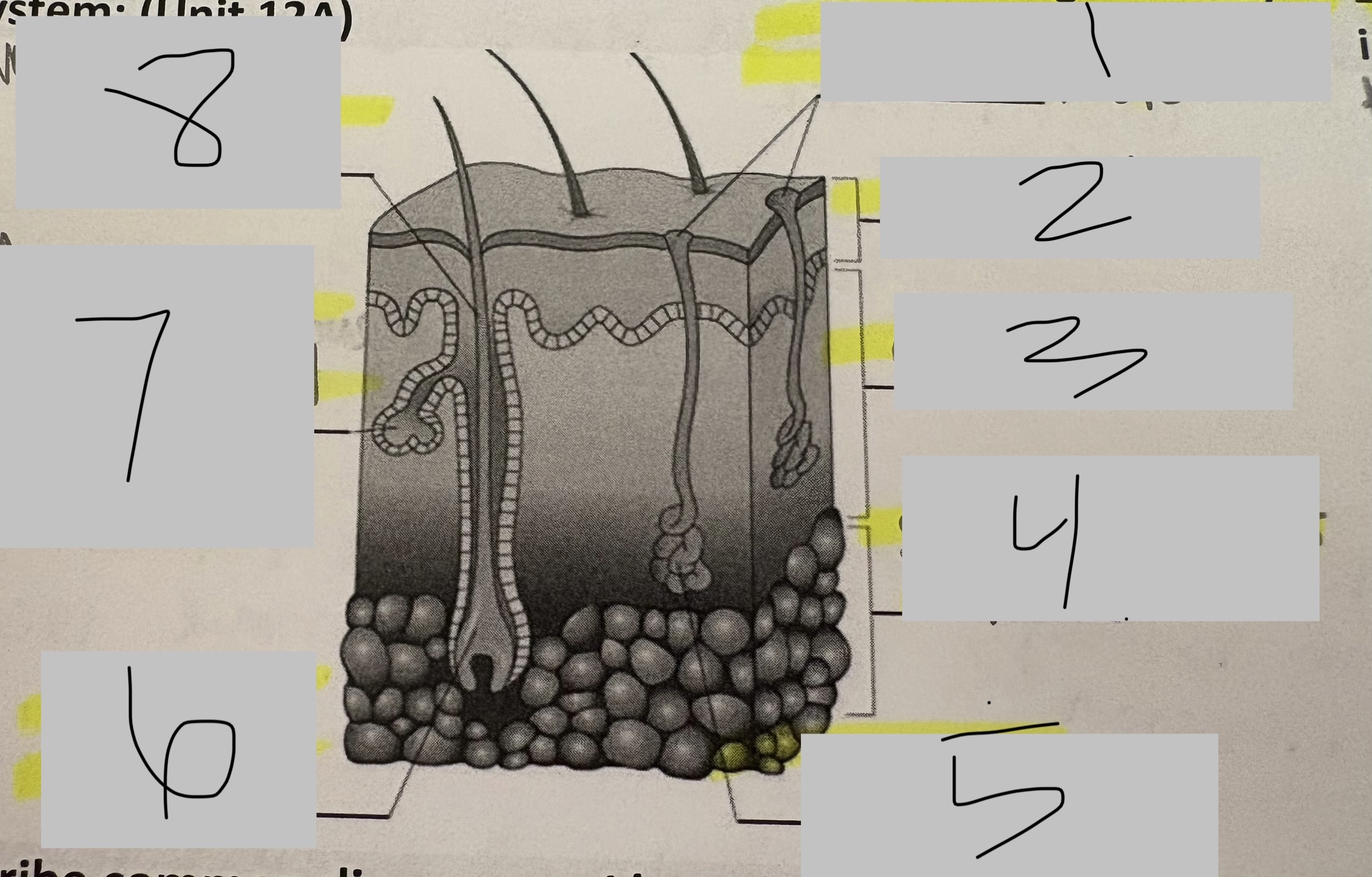
epidermis
2
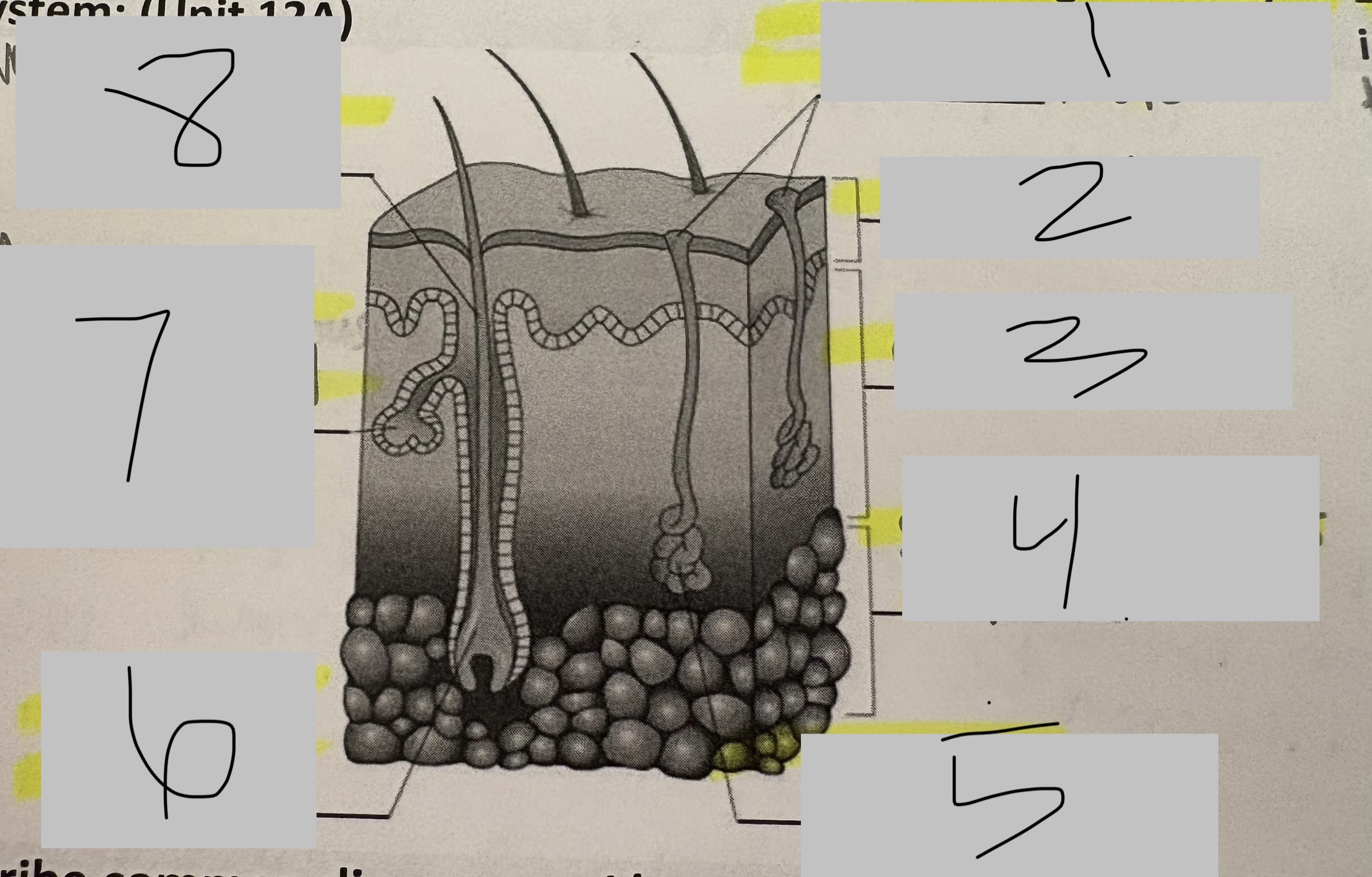
dermis
3
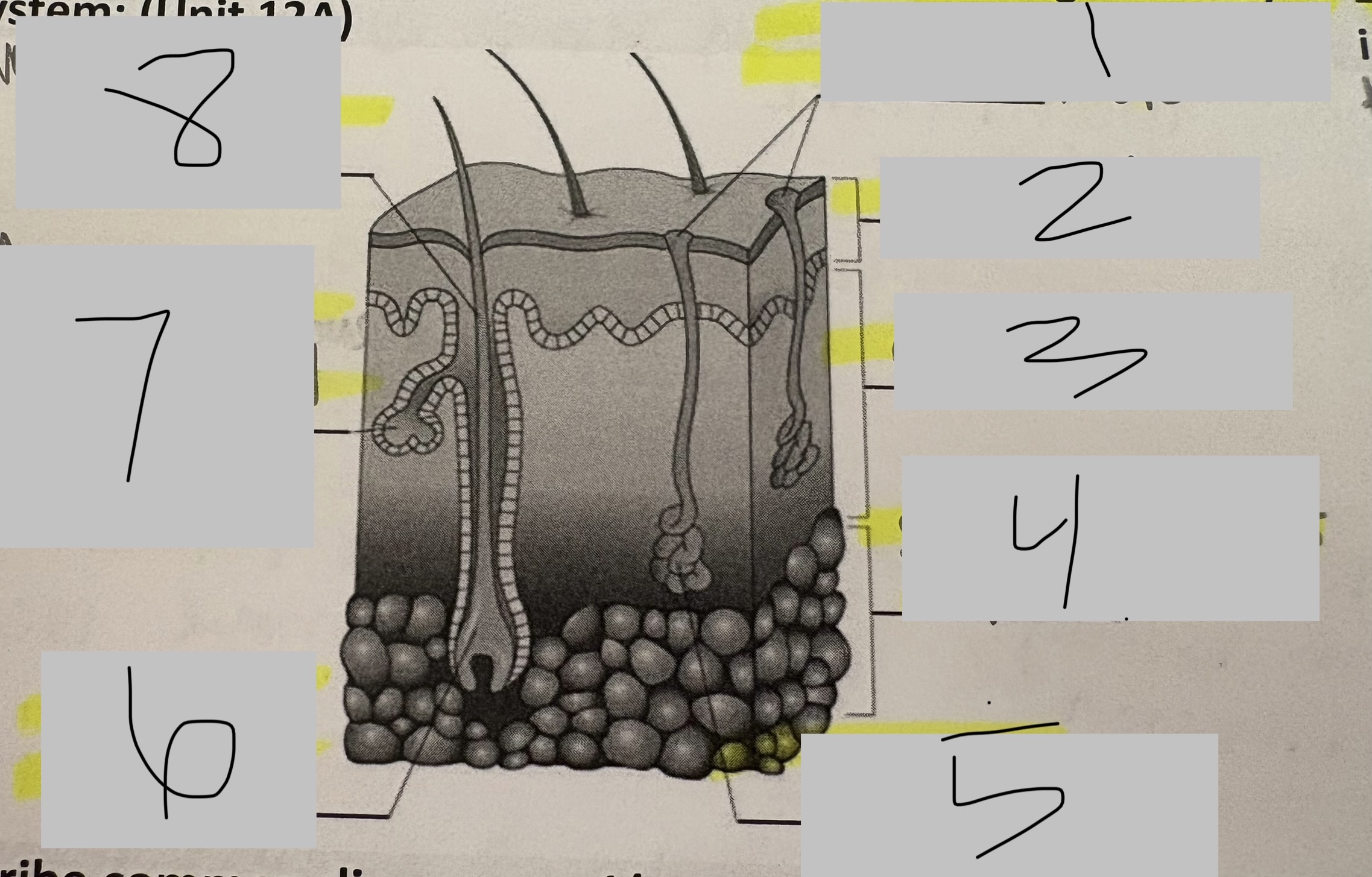
subcutaneous tissue
4
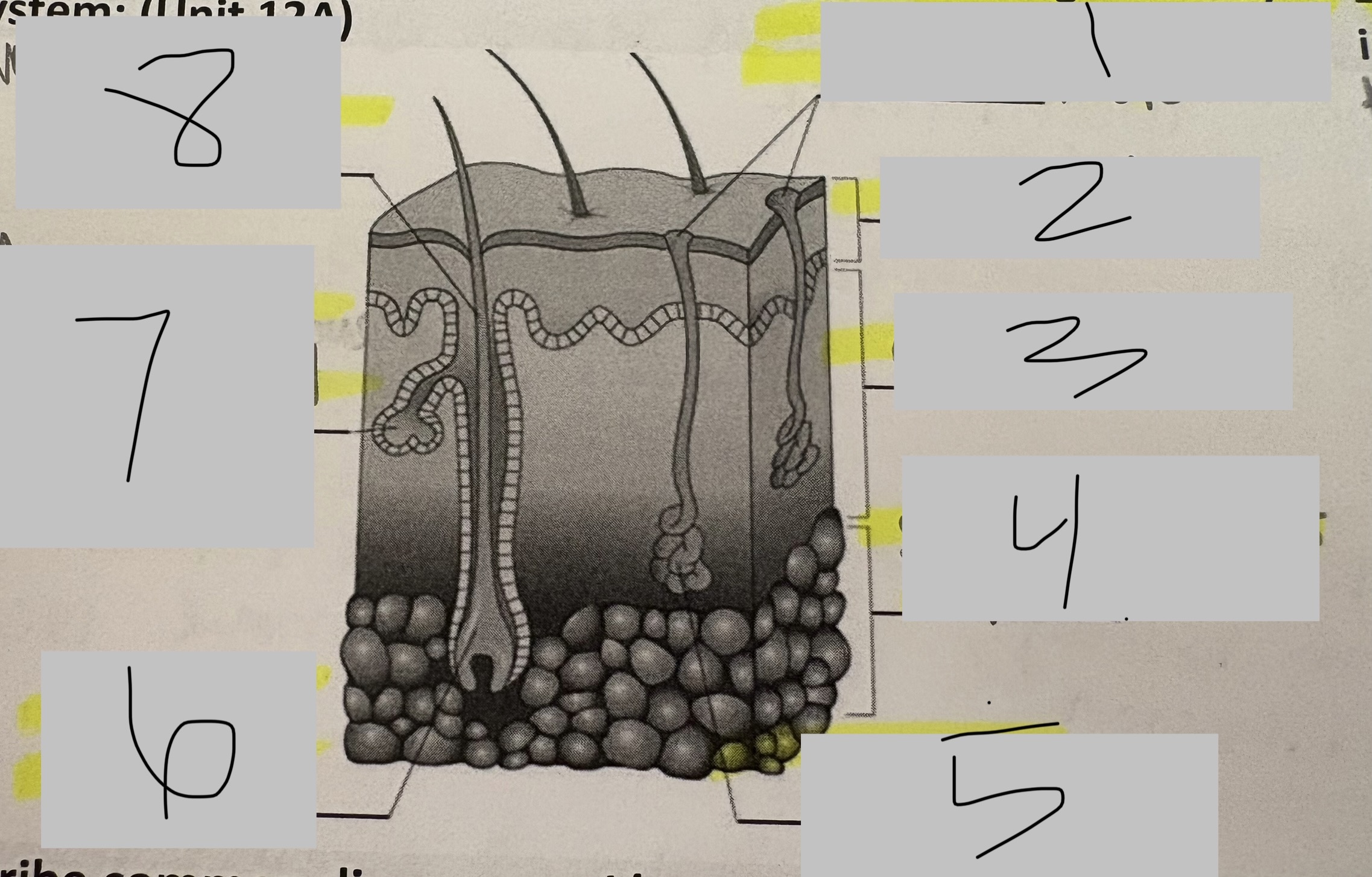
sweat gland
5
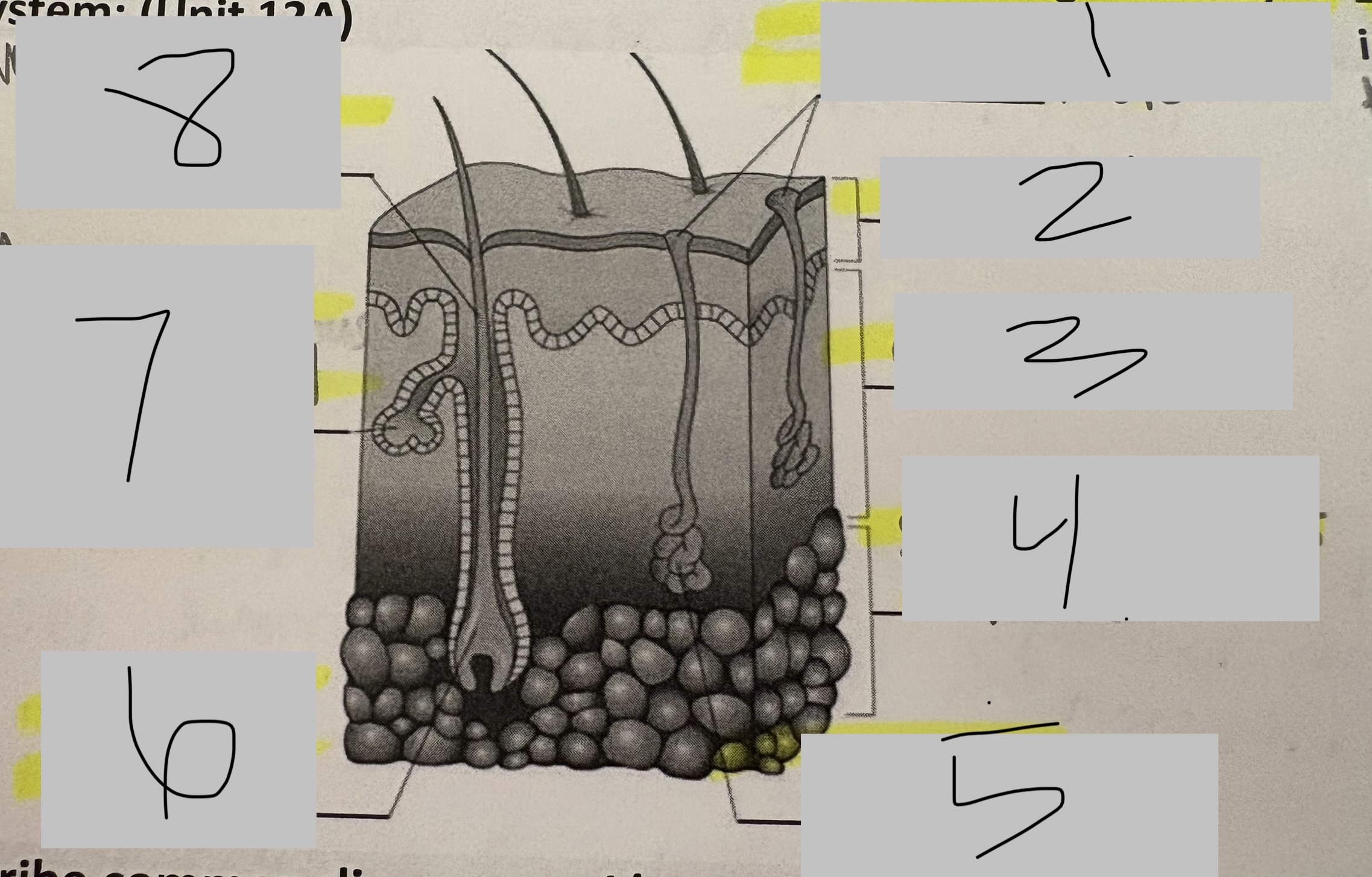
hair follicle
6
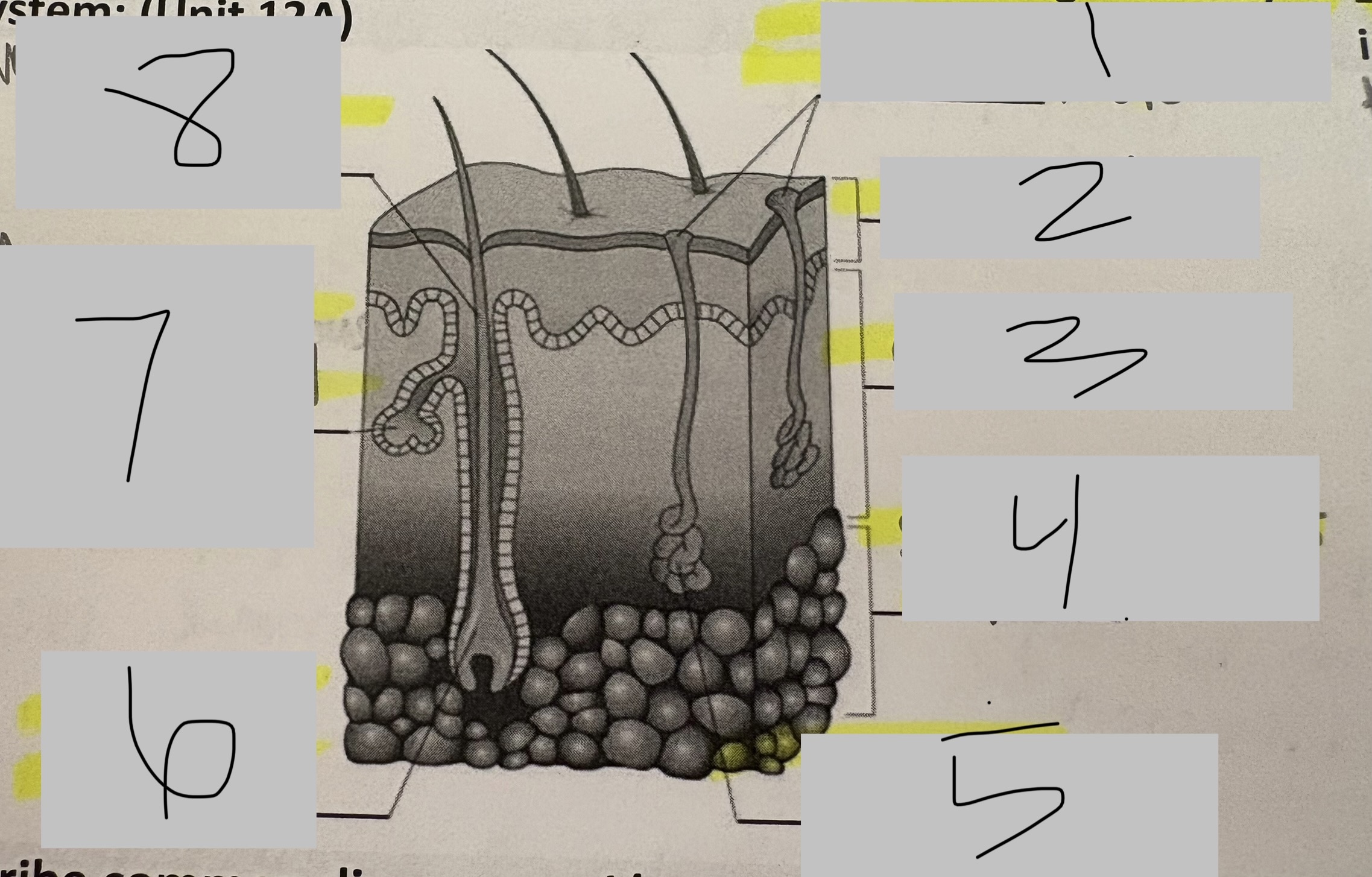
sebaceous gland
7
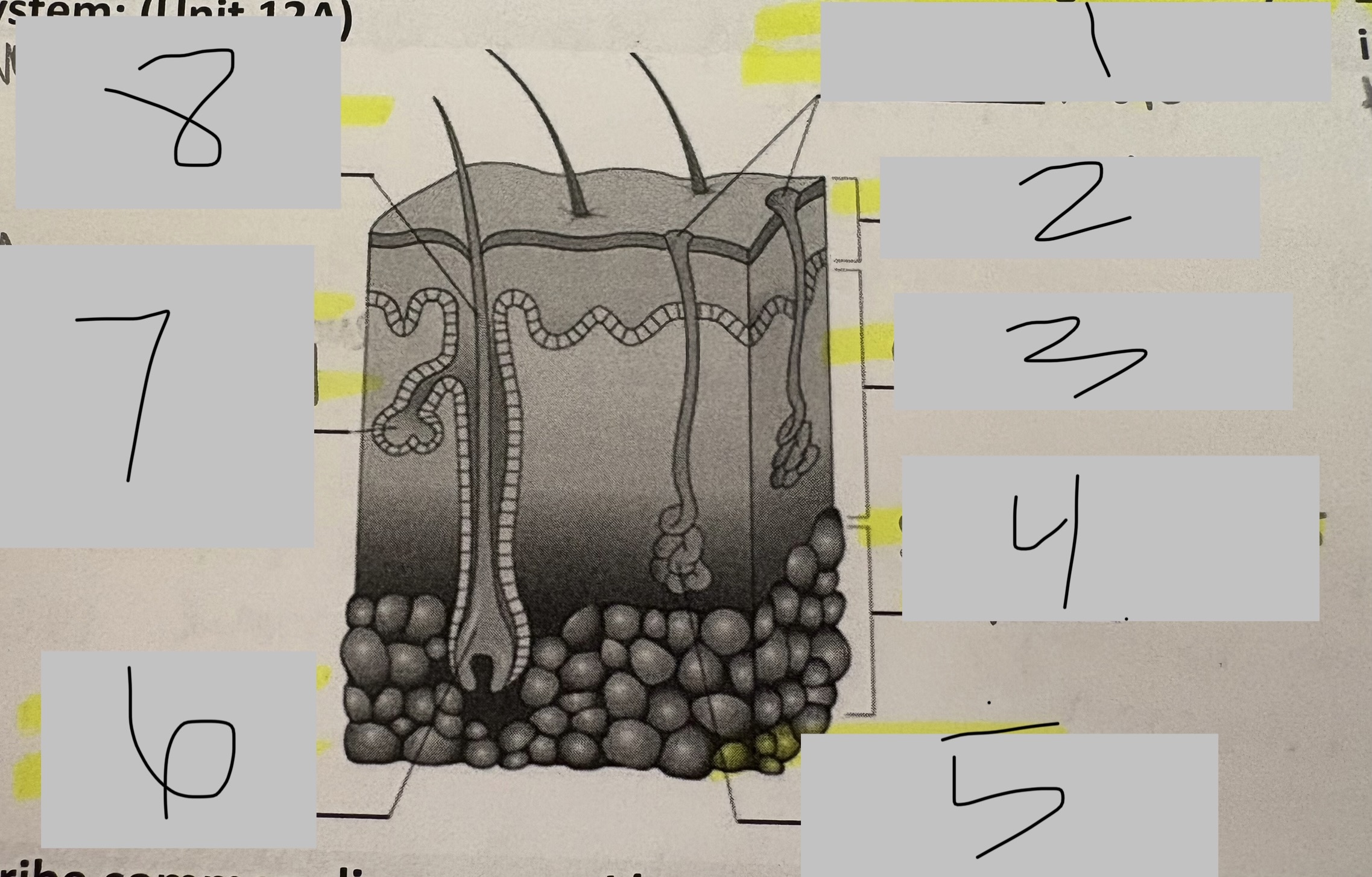
hair shaft
8
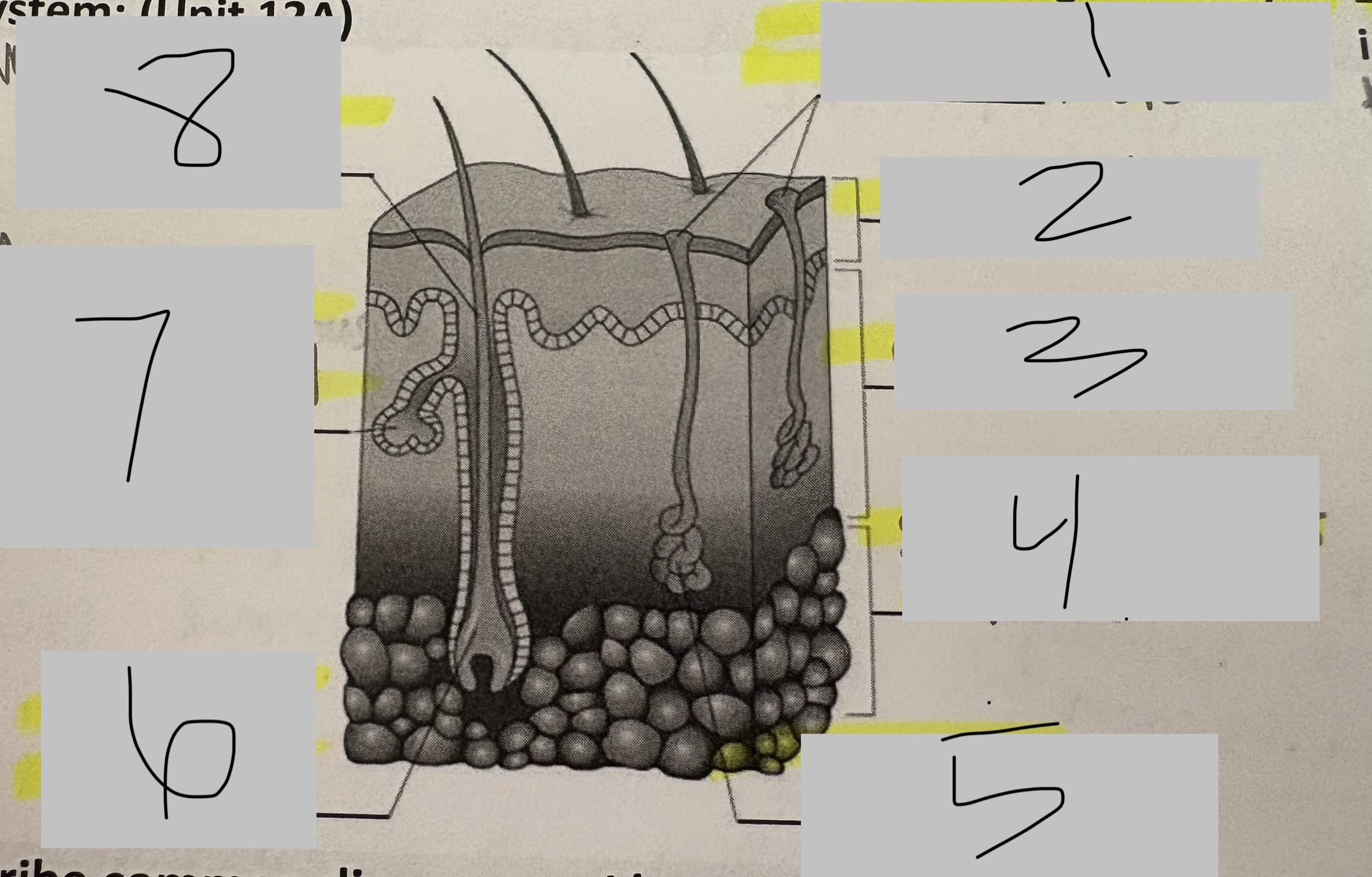
normal changes of aging related to the integumentary system
thinner drier fragile itchy and less elastic skin, protective fatty tissue is lost, hair thins and grays, wrinkles and brown spots, hard and bitter nails
signs and symptoms to report to the nurse for the integumentary system
pale white reddened or purple areas, blisters or bruises, complaints of tingling warmth or burning, dry or flaky skin, itchy skin, rash or discoloration, swelling, cuts broils sores etc, fluid or blood drainage, broken skin